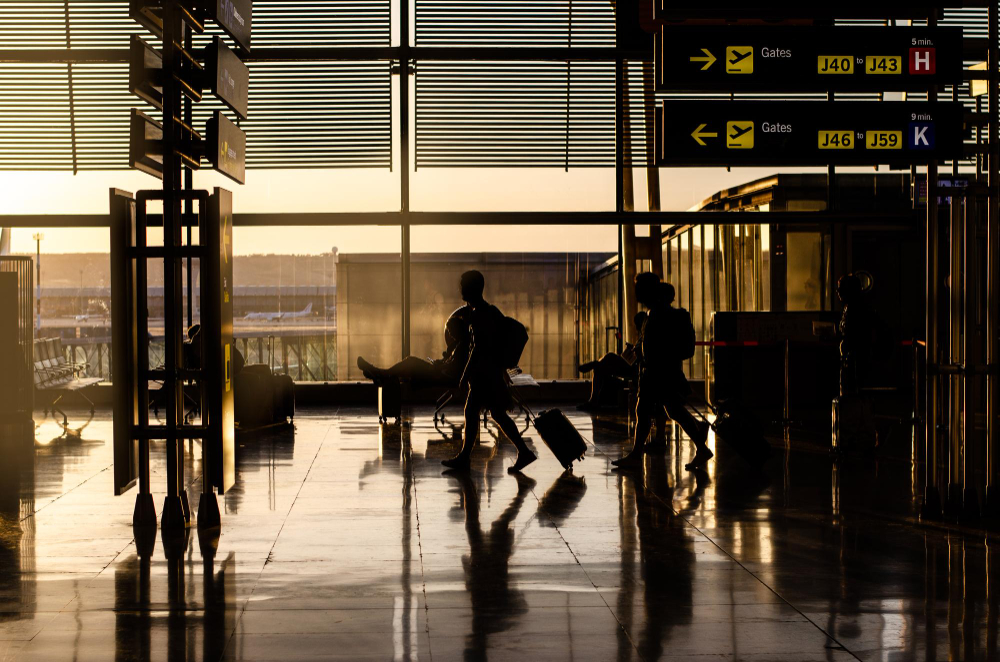1. Introduction: why it’s essential to know how early you should get to the airport
Arriving with the right amount of time before your flight is more than just good advice — it’s the foundation for a calm journey. Missing your flight due to long security lines, unexpected traffic, or check-in delays can ruin the start of your trip. Knowing how early you should get to the airport is the first step to travelling with confidence.
2. Key factors that determine how early you should arrive at the airport
Not all flights require the same arrival time. Here are the main variables:
-
Type of flight: Domestic or Schengen flights have fewer checks. International flights outside Schengen require more procedures.
-
Airline and class: Low-cost airlines often have fewer check-in counters, creating longer queues.
-
Season and time of day: Peak holiday seasons or early-morning and late-afternoon departures can double waiting times.
3. Recommended arrival times for different flights
-
Domestic and Schengen flights: Aim to arrive two hours before departure.
-
International flights outside Schengen: Plan to arrive three hours in advance.
At EAS Barcelona, with over 30 years of pilot training experience and 250,000 hours of flight instruction, punctuality is part of our DNA. These time frames are not suggestions — they are professional standards.
4. Check-in and boarding: how to save time before flying
Efficient check-in can save you precious minutes:
-
Online check-in: Available 24–48 hours before your flight. Skip straight to security if you have no checked luggage.
-
Self-service kiosks: Reduce waiting time compared to full service counters.
-
Traditional counters: Ideal for special baggage or passengers needing assistance.
In pilot training, understanding airport flow is essential. We teach our students to master every step from check-in to boarding — skills that also benefit passengers.
5. Security checks and border control: the biggest time risk
Security is where most delays happen:
-
Peak hours: Expect the longest lines between 6–9 a.m. and 5–8 p.m.
-
Fast Track services: Paid priority lanes can significantly reduce wait time, especially for international business travel.
From an aviation professional’s perspective, time lost at security can compromise an entire schedule. That’s why preparation is key.
6. How to get to Barcelona-El Prat Airport on time
-
Public transport: Train, Aerobús, and metro are fast options but depend on schedules and possible delays.
-
Private car: Flexible but requires advance parking planning, especially during high season.
Treat your trip to the airport like a flight plan. Calculate travel time, add a safety margin, and have backup options ready.
7. Extra tips to avoid last-minute problems
-
Keep documents handy: Passport or ID and boarding pass ready.
-
Prepare your baggage: Follow airline rules for weight and size to avoid check-in delays.
-
Use flight apps: Get real-time alerts for gate changes or delays.
Our cadets learn that preparation is part of aviation discipline. The same principle applies to passengers: readiness equals peace of mind.
8. Professional insight: punctuality from an aviation point of view
EAS Barcelona has trained over 2,000 pilots who now fly for major airlines worldwide. Every one of them understands that punctuality is not optional — it’s a protocol. Applying that discipline as a passenger ensures your trip begins the right way.
9. Conclusion: arriving at the airport early is the start of a smooth journey
Knowing how early you should get to the airport is about planning and discipline. Following these guidelines will help you avoid problems, reduce stress, and enjoy your trip from the very beginning. In aviation, preparation before take-off is everything — and that’s true whether you’re in the cockpit or in seat 23A.
